Posted by Elena del Valle on August 5, 2016
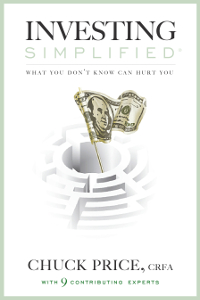
Investing Simplified
Photos: Chuck Price
After 40 years in the financial advice business Chuck Price, CRFA was convinced he could provide information for his clients and prospective clients better than the many books already published on the subject. Toward that goal he teamed up with nine colleagues to publish Investing Simplified (Advantage Media Group, $19.99) in 2014. They dedicated four years from idea to publication to make it happen.
“To me most Financial Books seemed very complicated and my clients told me I simplified concepts for them, so Investing Simplified became our slogan and a book,” Price said by email when asked why he wrote the book. Investing, he said “means to take a risk on your principle expecting returns, but may have losses as well.”

Chuck Price, author, Investing Simplified
The question most frequently asked by his clients is how much income they need to retire. He addresses the issue in Chapter 12. He began by suggesting readers figure out the following about their financial and life situation: current income and expenses, fixed and variable income sources, debt, life plans for retirement, life expectancy and long term care needs.
When asked what were the biggest challenges to writing and publishing his book he said, “Time, there are only so many hours in a day would be 1st. but second is writing does not come easy and anyone that thinks you can just set down and put your thoughts on paper and have it make sense is fooling themselves. Anyone that thinks it’s easy should try it.”
The 337-page softcover book is divided into 15 chapters and nine appendices. The final 100 pages make up the appendices written by the contributors. Price said he wanted to the book to be used as a training guide for the Average Person. He proposed a concept through which the advisor would work directly with a client’s attorney, accountant, long term care planner, and insurance agent. His next title? Why you need a Financial Doctor, just like you need a Medical Doctor.
Price, president and wealth manager, Price Financial Group Wealth Management, Inc., a Registered Investment Advisor firm in Portland, Oregon, has 40 years of financial experience. He is host of the Investing Simplified radio show that airs live Saturday mornings on Freedom970.
Jerry Murphey, president, FolioMetrix, LLC contributed The Four Principles of Risk-Intelligent Investing; Carl Jepsen, partner, in Warren Allen LLP Law Firm, contributed Estate Planning; Keven Steege, CPA contributed Finding and Hiring a CPA; Mei Wong of Senior Resources Today contributed Hidden VA Benefits; Rick Dimick, Life Insurance Linked/hybrid Benefits & Long term care specialist, contributed Long-Term Care; Mark Eshelman, loan officer, Reverse Mortgage, contributed Reverse Mortgages; Karen Kane contributed Medicare the Big Unknown; Janelle Markovich, sales executive, Propel Insurance, contributed Protecting Your Business; and Michael Dougherty, preplanning advisor, Dignity Memorial contributed Planning Your Funeral.
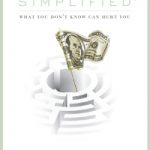
Click to buy Investing Simplified
Comments:
Filed Under: Books
Posted by Elena del Valle on July 25, 2016
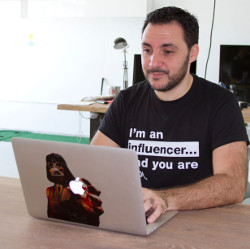
Ismael Elqudsi, CEO, SocialPubli.com
Photo: SocialPubli.com
A podcast interview with Ismael Elqudsi, CEO, SocialPubli.com, is available in the Podcast Section of Hispanic Marketing & Public Relations, HispanicMPR.com. During the podcast, he discusses multicultural influencer marketing with Elena del Valle, host of the HispanicMPR.com podcast.
Ismael has been chief executive officer at SocialPubli.com since the startup was launched on July 2015. He is also CEO of Internet República, an online marketing agency, the parent company of SocialPubli.com. During the three years prior to the establishment of Internet República, Ismael was head of social media and search engine optimization at Havas, one of the largest media agencies in the world. Previously, he was in charge of Bing in Spain, the Spanish yellow pages and Noxtrum, a Spanish search engine.
To listen to the interview, scroll down until you see “Podcast” on the right hand side, then select “HMPR Ismael Elqudsi” and click on the play button below or download the MP3 file to your iPod or MP3 player to listen on the go, in your car or at home. Some software will not allow flash, which is necessary for the play button and podcast player. If that is the case for you, you will need to download the file to play it. To download it, click on the arrow of the recording you wish to copy and save it to disk. The podcast will remain listed in the July 2016 section of the podcast archive.
Posted by Elena del Valle on July 22, 2016
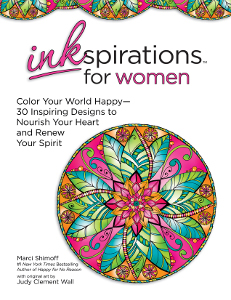
Inkspirations for Women
Photos: Health Communications
Coloring books for adults seem to be popping up everywhere lately. According to one source, in 2015, half the bestsellers on Amazon were adult coloring books (see Science-Backed Reasons To Add Coloring To Your Self-Care Practice by Judy Clement Wall mindbodygreen.com/0-24373/science-backed-reasons-to-add-coloring-to-your-self-care-practice.html). Studies indicate a brief period of art making can reduce anxiety. Some believe coloring makes people better thinkers and helps them to focus effectively.
So when information about a new coloring book arrived in my inbox I decided to take a look. Inkspirations For Women Color Your World Happy – Inspiring Designs to Nourish Your Heart and Renew Your Spirit (Health Communications, Inc. $19.95), the result of a collaboration between Marci Shimoff, author, Happy for No Reason, (see Listen to podcast interview with Marci Shimoff, author, Happy for No Reason about finding happiness) and Judy Clement Wall, a freelance artist, illustrator, and writer, is a softcover publication designed to be completed by coloring aficionado buyers. The project, which features 30 intricate designs of flowers, fauna and meditative mandalas, required four months from conception to publication.
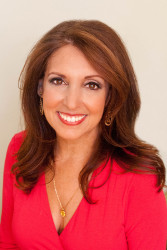
Marci Shimoff
“The idea to do an Inkspirations For Women book came about while I was illustrating HCI Books’ first coloring book, Inkspirations For Recovery, which is a book specifically designed for people using the Twelve-Step principles,” said Clement Wall by email when asked how she had become involved with the project. “We wanted to do another positive, uplifting book designed to inspire and encourage women.”
She and Shimoff, a New York Times Bestselling author, had worked together on other books through their publisher, HCI Books. When asked who might like the book, she said, “I think all women would like it. The illustrations are detailed, but not too complicated – just right for exploring your creativity, unwinding, and focusing inward in a really comfortable, fun way. The quotes and mantras are very inspiring, centered around the subjects of love, hope, dreams, gratitude, and self-belief.”
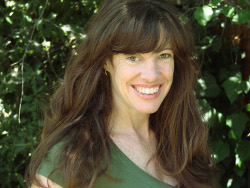
Judy Clement Wall, illustrator, Inkspirations for Women
The biggest challenges to writing, illustrating and publishing the coloring book the illustrator said were, “Learning how to draw for coloring. It’s a different kind of illustration. When I draw with the intention of my art being colored, I absolutely have the colorist in mind. I think of the finished pieces as collaborations. Often people post their colored pages to my Facebook wall, and I love seeing them.”
The book includes inspiring quotes and motivating mantras from Shimoff on love, hope, gratitude, and dreaming big. It also has an artist how-to section on customizing the art, thick stock paper compatible with colored pencils, markers, or watercolors, and perforated pages to encourage framing or sharing finished pieces.
Clement Wall is working on two more coloring books for HCI and a book of colorable postcards, to be released later this year. Shimoff is also author of Love for No Reason, co-authored six titles in the Chicken Soup for the Woman’s Soul series, and is a featured teacher in The Secret. She did not respond to questions for this note. The publisher is planning several more books in the Inkspirations series by different illustrators.

Click to buy Inkspirations for Women
Posted by Elena del Valle on July 11, 2016
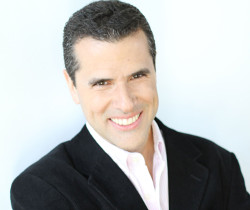
Marco Antonio Regil, founder, RGL Entertainment, Inc.
Photo:
A podcast interview with Marco Antonio Regil, founder, RGL Entertainment, Inc., is available in the Podcast Section of Hispanic Marketing & Public Relations, HispanicMPR.com. During the podcast, he discusses moving from employee to entrepreneur with Elena del Valle, host of the HispanicMPR.com podcast.
For 30 years Marco has been in the entertainment business. He was the host of Minute to Win It and the host and coproducer of Family Feud on network television. Along the way he discovered he wanted more than to be an employee. Twelve years ago he started on the path to financial freedom to take control of his career and his financial future by owning his business and becoming a professional investor.
To listen to the interview, scroll down until you see “Podcast” on the right hand side, then select “HMPR Marco Antonio Regil” and click on the play button below or download the MP3 file to your iPod or MP3 player to listen on the go, in your car or at home. To download it, click on the arrow of the recording you wish to copy and save it to disk. The podcast will remain listed in the July 2016 section of the podcast archive.
Posted by Elena del Valle on July 1, 2016
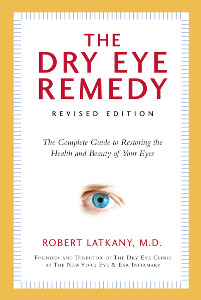
The Dry Eye Remedy
Photos: Hatherleigh Press
Do your eyes often feel tired? At the end of the day are they sore, burning? You may have dry eye. If so you are not alone. Dry eye is “not having enough quantity and/or quality of tears to coat the surface of the eye that can result in symptoms such as blurry vision, dryness, irritation, burning, foreign body sensation, and even pain,” according to Robert Latkany, M.D., founder, The Dry Eye Clinic at The New York Eye & Ear Infirmary.
In The Dry Eye Remedy Revised Edition The Complete Guide to Restoring the Health and Beauty of Your Eyes (Hatherleigh,$15.95) a 218-page soft cover book published in 2016, Latkany discusses the topic. The title, which he developed over a year from idea to publication, is an update to his first book on the same subject published in 2007. His target audience is anyone who suffers from dry eyes, from post menopausal women to the young contact lens wearing crowd.
When asked by email what prompted the release of the revised edition, he replied, “I figured 9 years later an update was needed as there were a lot of advances in diagnostic testing and some advancement in therapeutic options now available that the public needed to know.” To the question in what ways exactly is the new edition different from the original? he said, ”
There is a lot of new information on new diagnostic testing available in the eye doctor’s office. And there are a few new therapies. So these two sections had the most changes.”
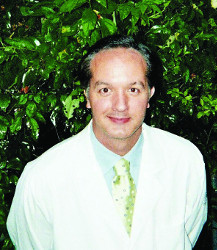
Robert Latkany, author, The Dry Eye Remedy
While inflammation is a major cause of dry eye not all dry eye patients have inflammation, the ophthalmologist explained when asked if dry eye was another term for inflammation. Other causes of the condition include cosmetic surgery, stress, and allergies. On the good news front, it is possible to remedy dry eye with nutrition and lifestyle changes alone.
“What you eat and what you are around and the daily stresses of life can have a major impact on dry eyes,” said Latkany, who is considering writing a book about ocular rosacea and allergies in the eyes.
When asked about the rewards to writing the books he said, “I have performed many different eye surgeries, including cornea transplants, cataracts and laser eye surgery and to improve vision on someone is very rewarding. But to make a neglected debilitated dry eye patient happy and feel more comfortable is extremely rewarding. They are very grateful.”
Dry eye, which can range from mild discomfort to serious, affects tens of millions of Americans and has no cure. Among sufferers more women than men (two to one, according to the National Eye Institute) are afflicted by dry eye, Latkany points out in the book.
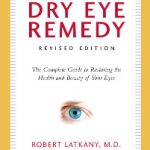
Click to buy The Dry Eye Remedy, Revised Edition
Comments:
Filed Under: Books
Posted by Elena del Valle on June 24, 2016
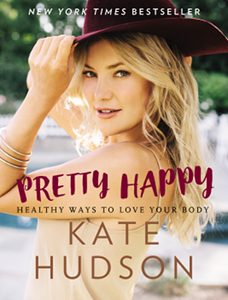
Pretty Happy
Photo: HarperCollins Publishers
Based on her personal experience Kate Hudson, actor and producer, believes the path to good health requires discipline and involves listening to her body and her mind, feeling good in her body and connected with it by slowing down, eating well, exercising and meditating. Making lifestyle changes takes time and effort, she says. To reach her goal she follows four guidelines she calls pillars: Cultivating an intuitive relationship with her body; eating well; awakening her body; and the miracle of mindfulness.
In Pretty Happy: Healthy Ways to Love Your Body (Dey Street Books, $26.99), a 235-page hardcover book published February 2016, she and Billie Fitzpatrick explain her approach to life. It includes questionnaires for readers and is divided into ten chapters and three main areas: Becoming Body Smart, The Four Pillars in Practice, and Living Body Smart. In the book, peppered with color photos of Hudson, thin, with blond highlights and make up, she says she believes in self acceptance.
In her personal journey toward healthy living she relied on a variety of sources, she explains at the beginning. At the end of the book she shared a short list of books for readers who want to know more. She believes in Ayurvedic eating with an emphasis on whole alkaline (as opposed to acidic) foods. In the book, she shares a sample list of acidic and alkaline foods. She is convinced that enjoying what she does when she exercises is important. Although moving is essential, there is no single answer that applies all the time or to everyone, and each person has to dedicate time to understanding her or his body, Hudson says.
Fitzpatrick has collaborated on nonfiction books about mind-body health, nutrition, fitness, neuroscience, business and sexuality. Hudson is cofounder of Fabletics. She was unavailable to respond to questions, according to a representative from her publishing company.

Click to buy Pretty Happy
Comments:
Filed Under: Books
Posted by Elena del Valle on June 15, 2016
By Jay Gronlund,
President, The Pathfinder Group
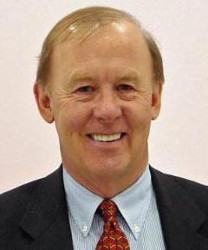
Jay Gronlund, president, The Pathfinder Group
On May 19, 2016 I went to the “Latinas & Power” symposium in Hartford, CT, at the invitation of the main organizer, Marilyn Alverio. Although this event had been running for 13 years, it was my first time attending.
What a pleasant surprise! Over 500 Latina of all ages attended, and the enthusiasm was ubiquitous and profound. There were two main goals: to educate Latinas on the skills to become more proactive politically and in business and careers, and secondly to motivate and inspire, giving them the confidence that they can indeed accomplish more in life.
Click to read the entire article How Personal Branding Can Help Latinas Achieve More
























